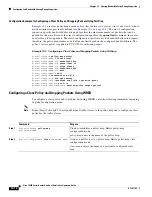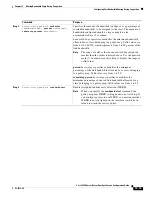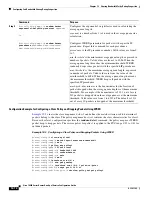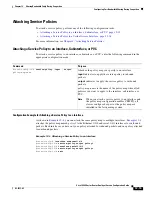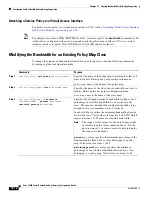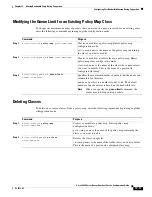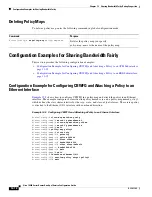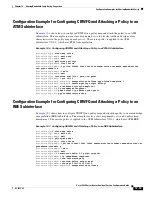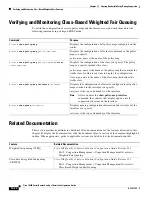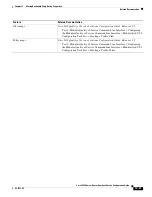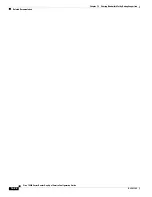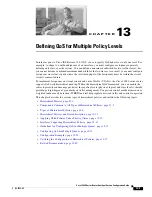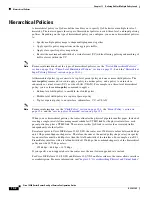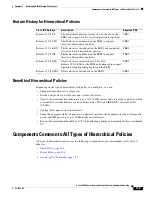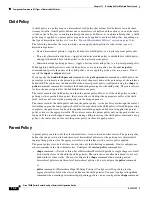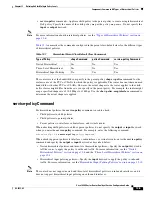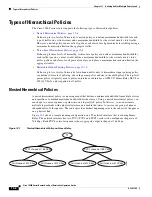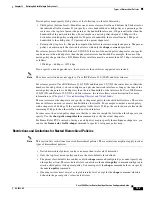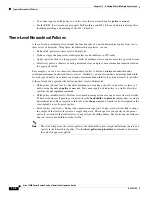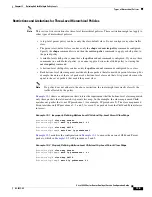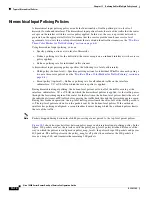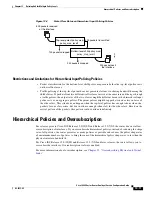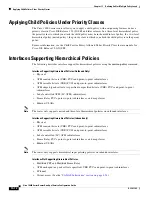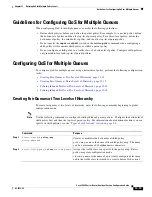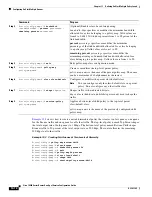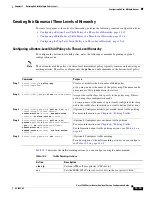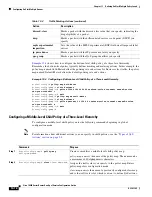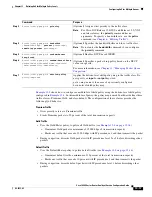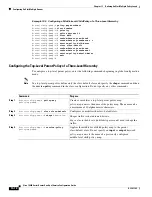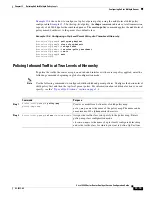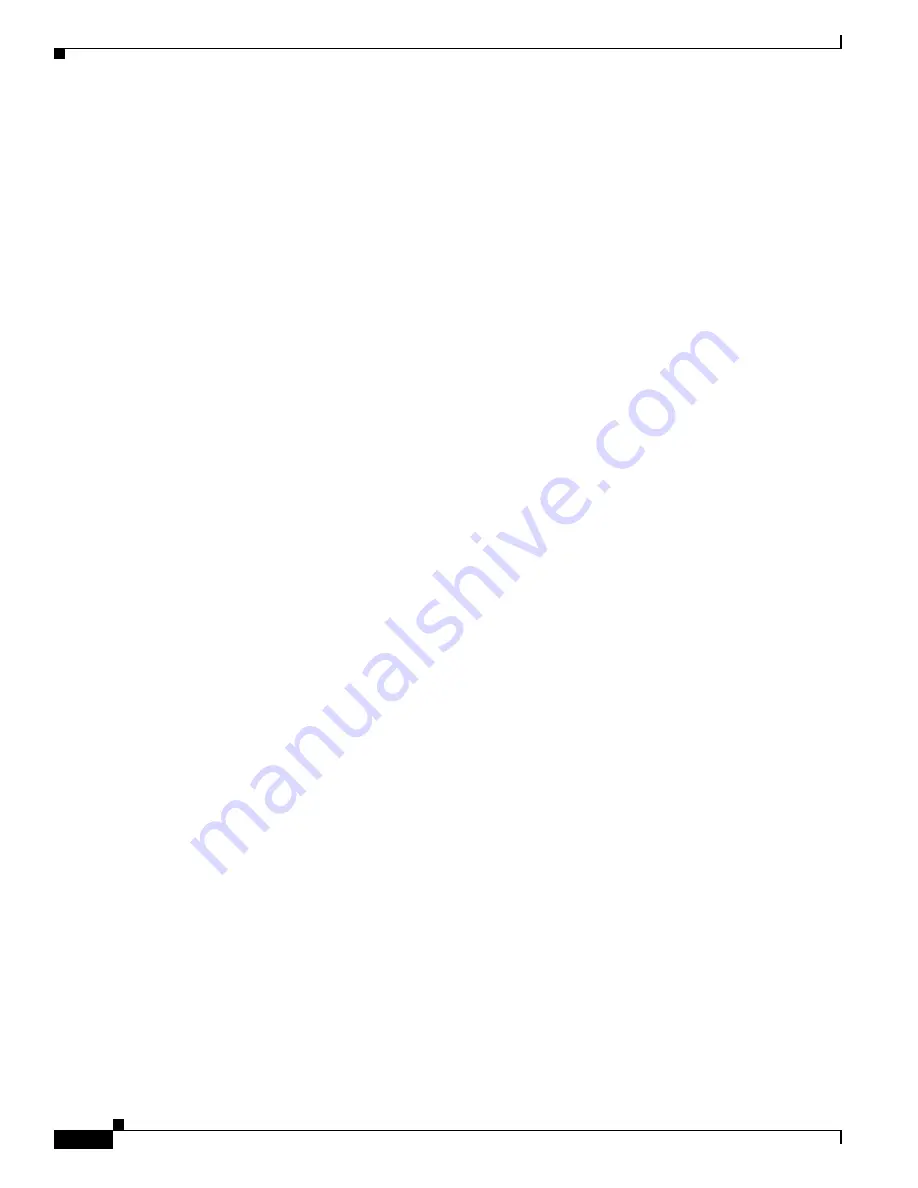
13-4
Cisco 10000 Series Router Quality of Service Configuration Guide
OL-7433-09
Chapter 13 Defining QoS for Multiple Policy Levels
Components Common to All Types of Hierarchical Policies
Child Policy
A child policy is a policy map in a hierarchical QoS policy that defines QoS behavior for individual
streams of traffic. A child policy defines one or more classes of traffic and the actions you want the router
to take on the traffic, just as non-hierarchical policy maps do. However, in a hierarchical policy, a child
policy map is applied to a parent policy map and can be applied to another child policy, depending on
the type of hierarchical policy it is (see the
“Types of Hierarchical Policies” section on page 13-6
).
The following describes the ways in which you can apply child policies for the various types of
hierarchical policies:
•
Nested hierarchical policies—Apply a bottom-level child policy to a top-level parent policy only.
•
Three-level hierarchical policies—Apply a bottom-level child policy to a middle-level child policy;
and apply the middle-level child policy to the top-level parent policy.
•
Hierarchical input policing policies—Apply a bottom-level child policy to a top-level parent policy.
When applying child policies to other child policies or to a parent policy, use the
service-policy
command and specify the name of the child policy you are applying as the
policy-map-name
. Do not
specify the
input
or
output
keyword.
If you specify the
bandwidth percent
command or the
police percent
command in a child policy, the
percentage you indicate is the percentage of the total shape rate and not the percentage of the interface
bandwidth. The router uses the bandwidth of the nearest parent policy (configured using the
shape
or
police
command) command to calculate the bandwidth percentage for the child policy. The router always
looks to the nearest parent for the bandwidth reference point.
The router executes the child policy and then the parent policy. However, if the child policy contains
policing with a specified drop policy, the router polices and drops the appropriate traffic at the child
level, but does not execute the parent policy on the dropped packets.
The router executes the child policy and then the parent policy. As the packets pass through the router’s
forwarding engine, the router applies the QoS actions specified in the child policy. After child processing
completes, the packets are fed back through the forwarding engine and the router applies the parent
policy actions to the aggregate traffic. The router executes the parent policy only on the packets that are
fed back. If the router dropped some packets during child processing (the child policy contained a drop
policy), the router does not execute the parent policy on those dropped packets.
Parent Policy
A parent policy contains only the class-default class; it can contain no other classes. The parent policy
defines the shape rate (nested and three-level hierarchical policies) or the policing rate (hierarchical
input policing policies) for the aggregate traffic on an interface with a service policy applied.
The parent policy class-default class can contain only the following commands. Do not configure any
other commands in the class-default class. Configure the
service-policy
command last.
•
shape
command—(Nested or three-Level Hierarchical Policies) Specifies a single shape rate for all
of the traffic classes defined in the child policies. The router does not allocate unused (or excess)
bandwidth for other traffic. You must configure the
shape
command when creating nested
hierarchical policies and three-level hierarchical policies; do not configure the
police
command.
or
police
command—(Hierarchical Input Policing Policies) Configures traffic policing for the
aggregate traffic of all of the classes defined in the child policies. You must configure the
police
command when creating hierarchical input policing policies; do not configure the
shape
command.

